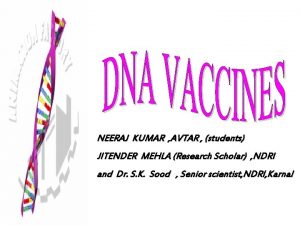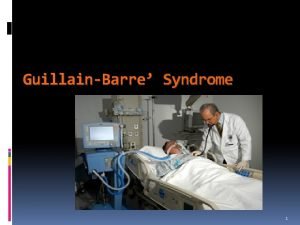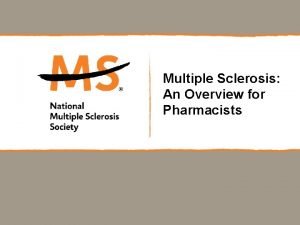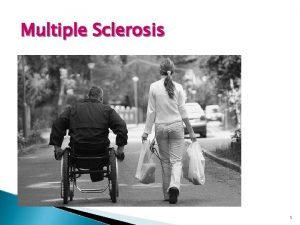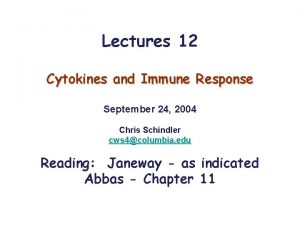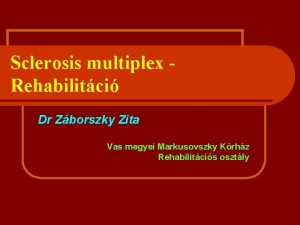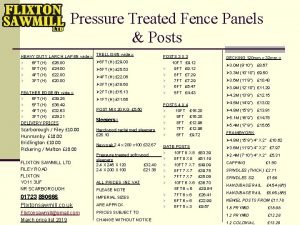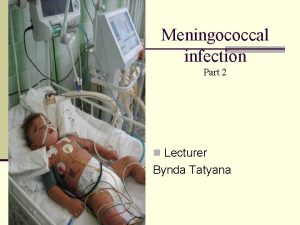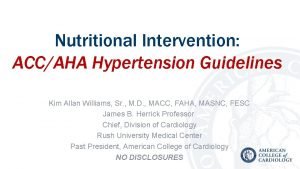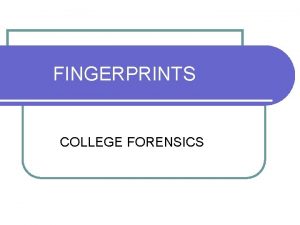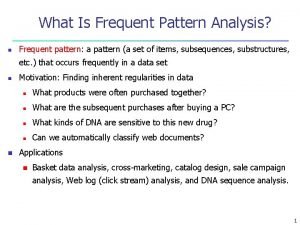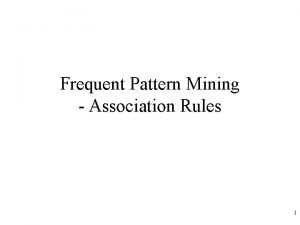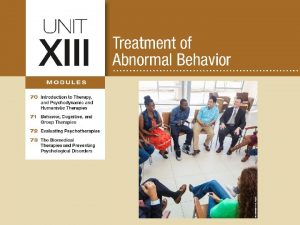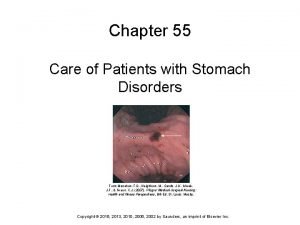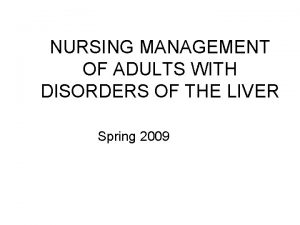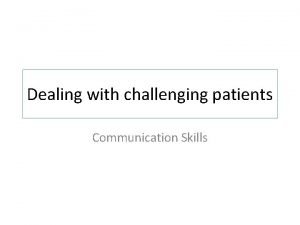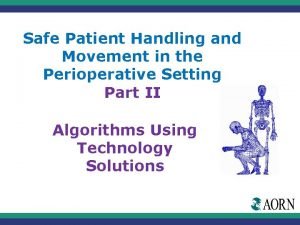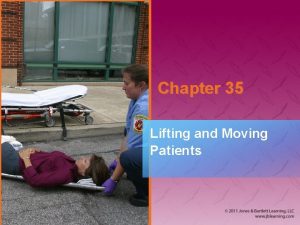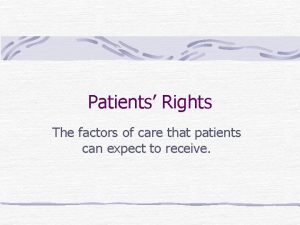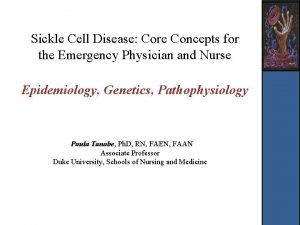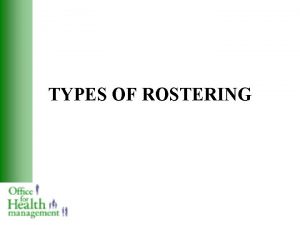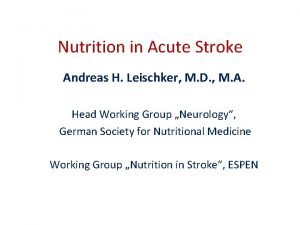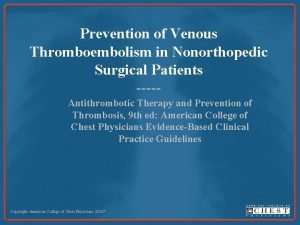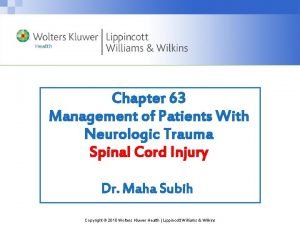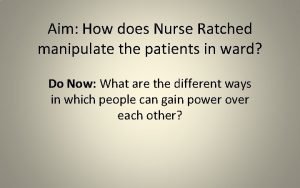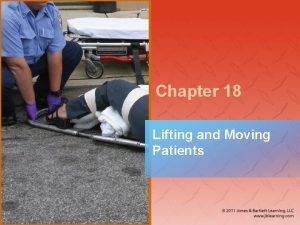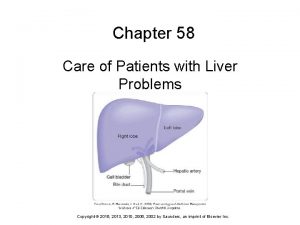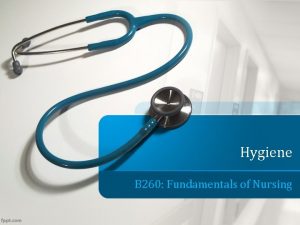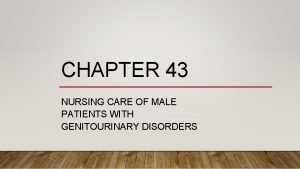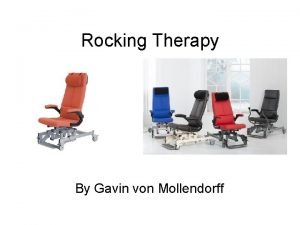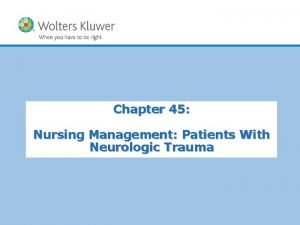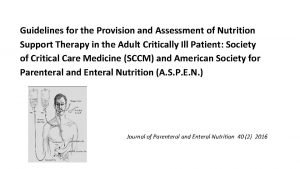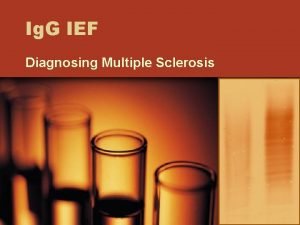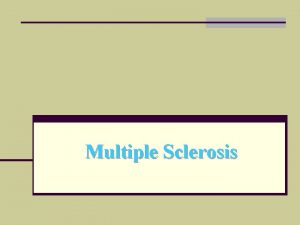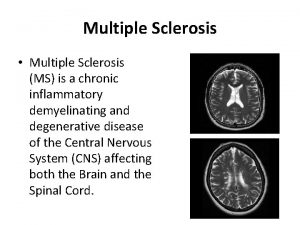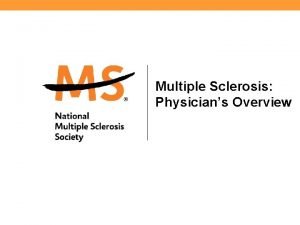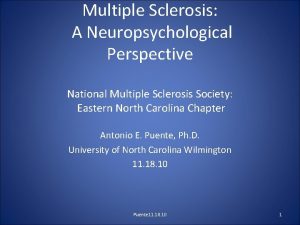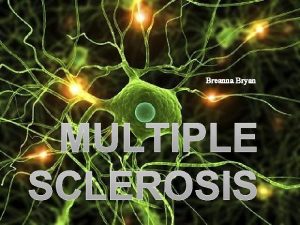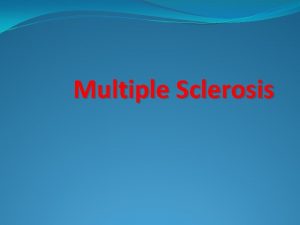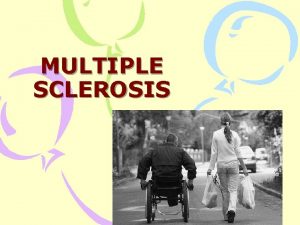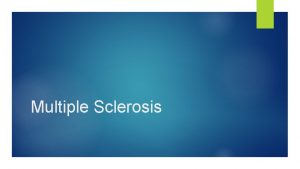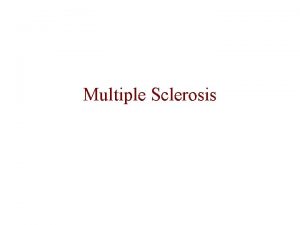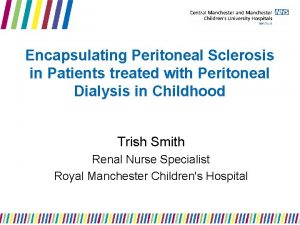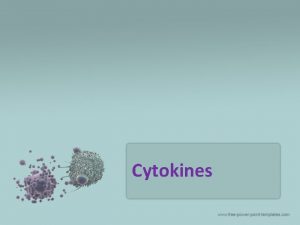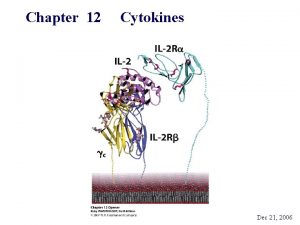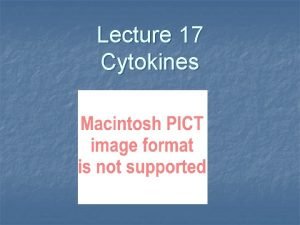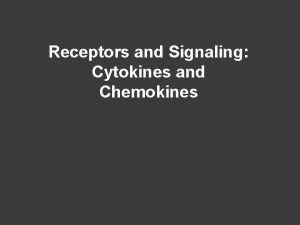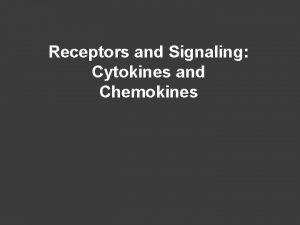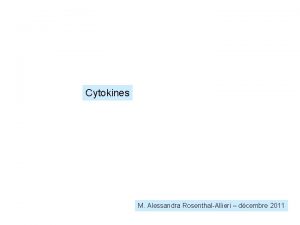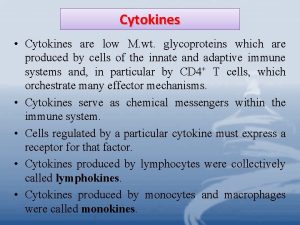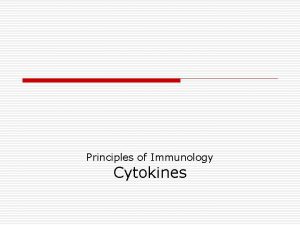Cytokines pattern of Multiple Sclerosis patients treated with














































































- Slides: 78

ﺍﻟﺮﺣﻴﻢ ﺍﻟﺮﺣﻤﻦ ﺍﻟﻠﻪ ﺑﺴﻢ Cytokines pattern of Multiple Sclerosis patients treated with Apitherapy Ahmad G. Hegazi, Khaled Al. Menabbawy, Eman H. Abd El- Rahman and Suzette I. Helal National Research Center, Dokki, Giza, Egypt ahmed@ahmedhegazi com and ahmedhegazi 128@gmail. com www. ahmedhegazi. com

4 rd International Conference and Exhibition on Clinical & Cellular Immunology September 28 – 30 September, 2015 Houston, USA Cytokines pattern of Multiple Sclerosis patients treated with Apitherapy



Multiple Sclerosis

What is Multiple Sclerosis? q It is an Auto Immune Disease which is when the body starts to destroy itself. q It is a life-long disease with no cure. q In MS, the body attacks and destroys the fatty tissue called myelin that insulates an axon/nerve, and is called demyelination. q If damage is severe it can also destroy the nerve/axon itself. q MS affects the central nervous system and inflames the white matter in the brain which creates plaques.

Definition of Multiple Sclerosis An inflammatory demyelinating disease of the CNS where there is: Dissemination in space Dissemination in time No alternative neurologic disease MS is a clinical diagnosis

Multiple Sclerosis Epidemiology The most common progressive neurologic disease of young adults Affects 350, 000 persons in the USA Risk Factors: Female sex White race Northern latitude (USA) High socioeconomic status Scandinavian ancestry

MULTIPLE SCLEROSIS FEATURES • two stages disease: inflammation and neurodegeneration • 4, 000 people affected worldwide • Women: men 2: 1 • Age of disease onset: 25 -30 ys (young adulthood)

• Neurological impairments: • blindness, • loss of sensation, • lack of coordination, • incontinence, • paralysis • Relapsing-remitting (80%); • chronic progressive (10%); • benign (10%)

Disease Overview: Autoimmunity Peripheral tolerance involves a populations of regulatory T cells which maintain autoreactive T cells in a “dormant” state in the circulation in adults. P. Martini

The autoreactive T cells can be awoken from this state by local or environmental stimuli such as exposure to endogenous or exogenous antigens in the circulation. In MS these cells becomes activated either because of failure of the mechanism of peripheral tolerance or due to priming by antigens.


MULTIPLE SCLEROSIS FEATURES Once activated autoreactive T cells release a cocktails of cytokines that are important for migration and homing of the cells to the target sites and for initiation of the inflammatory process

Disease Overview: Multiple Sclerosis (MS) is an inflammatory disease of the Central Nervous System (CNS) affecting the brain and spinal cord. Predominantly, it is a disease of the "white matter" tissue. The white matter is made up of nerve fibers which are responsible for transmitting communication signals both internally within the CNS and between the CNS and the nerves supplying rest of the body.

Multiple Sclerosis Etiology Possible precipitating factors include ØInfection ØPhysical injury ØEmotional stress ØExcessive fatigue ØPregnancy ØPoor state of health

Multiple Sclerosis Etiology and Pathophysiology Myelin can be replaced by glial scar tissue Without myelin, nerve impulses slow down With destruction of axons, impulses are totally blocked Results in permanent loss of nerve function


Signs & Symptoms : The person with MS can suffer almost any neurological symptom or sign, including: changes in sensation, muscle weakness, spasm, or difficulty in moving; difficulties with coordination and balance;

Signs & Symptoms : problems in speech or swallowing, visual problems, fatigue, pain bladder and bowel difficulties. Cognitive impairment of varying degrees emotional symptoms of depression or unstable mood are also common.

Symptoms of MS Weakness Fatigue Dizziness/Unsteadiness Depression Numbness/Tingling Memory change Ataxia Pain Euphoria Spasticity Speech disturbance Vertigo Bladder/Bowel/Sexual Tremor Double Vision/Vision Loss dysfunction

Causes Of MS : Most likely MS occurs as a result of some combination of genetic, environmental and infectious factors. Epidemiological studies of MS have provided hints on possible causes for the disease.

Theories try to combine the known data into plausible explanations, but none has proved definitive. Genetics: Environmental factors: Infections:

Genetics Of MS

Radiological Findings





Brain Atrophy (Shrinkage) in Untreated MS Images acquired over the course of 7 years from a single person with untreated MS

MRI: Spinal Imaging


Eighty patients known to be with MS, Twenty four males and fifty six females, their ages ranged between 26 -71 years, with a mean of 38. 7 ± 4. 8. 2.

All cases were subjected to complete clinical and neurological history and examination to confirm the diagnosis.

There were 44 cases with quadriparesis, (12 males and 32 female) and 36 cases with paraparesis (12 males and 24 females).

All cases were under their regular treatment either by corticosteroids, or interferon. These cases were divided into two main groups, each group consists of 40 cases (12 males and 28 females),

Group I received honey, pollen, royal jelly and propolis and were treated with bee acupuncture 3 times weekly, for 12 months, started gradually by one sting then gradually increase up to 25 stings per session, in addition to their medical treatment

while group II remains on their ordinary medical treatment only.

Bee acupuncture done by bee stings for regulating the immune system in the following points Du 13, 14, Li 11, S 6, S 9, points for MS Pat Wagner Buttocks Jiagi points for cervical area and lumber area and vision points GB 2 and Li 3.

All patients were instructed to receive 2000 -3000 mg Vitamin C, 15 mg Vit. B 1, 3 mg Vit. B 2, 2 mg Vit. B 6, 5 mg Vit. B 12,

25 mg Folic acid, 3 mg Calcium pantothenate, 15 mg Nicotinamide, 20 mg L- Arginine, 20 mg L- Lysine and 3 mcg Biotin / day.

Serum samples were obtained from patients with clinically definite MS for estimation of serum levels of immunoglobulin E (Hirano et al. , 1989) using commercially available ELISA kits according to the manufacturers' directions.

Serum cytokine levels IFN-γ, interleukin (IL) 1β, IL-4, IL-6, IL-10, tumor necrosis factor alpha (TNFα) were assessed using enzyme inked ‑ immunosorbent assays (Abrams, 1995) using commercially available ELISA kits according to the manufacturers' directions (kits produced by Bender Med System, Vienna, Austria).

All these investigations were done at the beginning of the study and by the end of one year of supplementation and bee sting sessions


We found that 8 patients out of 12 (66. 6 % of paraparesis cases), showed some improvement regarding their defects in gait, bowel control, constipation and urination,

while 12 cases out of 16 cases (75% of quadriparesis cases), showed some mild improvement in their movement in bed, and better improvement in bed sores, sensation, and better motor power, only two cases of them ( 12. 5% ) were able to stand for few minutes with support.

Symptoms Score Improvement Recorded Every Two Months (1 -12):

Symptoms Score Improvement Recorded Every Two Months (1 -12):

Symptoms Score Improvement Recorded Every Two Months (1 -12):

Symptoms Score Improvement Recorded Every Two Months (1 -12):

Symptoms Score Improvement Recorded Every Two Months (1 -12):

Symptoms Score Improvement Recorded Every Two Months (1 -12):

Symptoms Score Improvement Recorded Every Two Months (1 -12):

Symptoms Score Improvement Recorded Every Two Months (1 -12):

Symptoms Score Improvement Recorded Every Two Months (1 -12):

Symptoms Score Improvement Recorded Every Two Months (1 -12):

Symptoms Score Improvement Recorded Every Two Months (1 -12):

Symptoms Score Improvement Recorded Every Two Months (1 -12):

Symptoms Score Improvement Recorded Every Two Months (1 -12):

Symptoms Score Improvement Recorded Every Two Months (1 -12):

Symptoms Score Improvement Recorded Every Two Months (1 -12):

Symptoms Score Improvement Recorded Every Two Months (1 -12):

Symptoms Score Improvement Recorded Every Two Months (1 -12):

Symptoms Score Improvement Recorded Every Two Months (1 -12):

Symptoms Score Improvement Recorded Every Two Months (1 -12):

Mean levels of Ig. E of both groups at the start and end of the study

Mean levels of (TNF) α of both groups at the start and end of the study

Mean levels of (IL) 1β of both groups at the start and end of the study

Mean levels of IL-6 of both groups at the start and end of the study

Mean levels of (IL 4) of both groups at the start and end of the study

Mean levels of IL-10 of both groups at the start and end of the study


Although Apitherapy is not a curable therapy in MS, but it can be used to minimize some of the clinical symptoms of MS, and can be included among programs of MS therapy.

By By By

Cytokines pattern of Multiple Sclerosis patients treated with Apitherapy Ahmed G. Hegazi National Research Center, Egypt

Cytokines pattern of Multiple Sclerosis patients treated with Apitherapy Ahmed G. Hegazi National Research Center, Egypt

Prof. Dr. Ahmed Hegazi • Professor of Microbiology and Immunology • National Research Center, Dokki, Giza, Egypt President of Egyptian Environmental Society for uses and production of bee products Secretary of Egyptian Society of Apitherapy Secretary General of African Federation of Apiculture Associations Member of Apitherapy Commission , APIMONDIA E mail: ahmed@ahmedhegazi. com and ahmedhegazi 128@gmail. com www. ahmedhegazi. com Tel: + 2023 7749222 and + 20238860682 Fax: + 202 37749222 and + 202 33370931 GMS: + 201001440063
 Cell
Cell Multiple sclerosis concept map
Multiple sclerosis concept map Is multiple sclerosis fatal
Is multiple sclerosis fatal Multiple sclerosis nursing concept map
Multiple sclerosis nursing concept map Cytokines examples
Cytokines examples Záborszky zita
Záborszky zita Crest syndrom
Crest syndrom Reed sternberg cell diagram
Reed sternberg cell diagram Advantages and disadvantages of mimd
Advantages and disadvantages of mimd Multiple probe vs multiple baseline
Multiple probe vs multiple baseline Flixton sawmill price list
Flixton sawmill price list Treat everyone with sincerity
Treat everyone with sincerity Chapter 20 chemical texture services
Chapter 20 chemical texture services менінгококовий менінгіт
менінгококовий менінгіт Different market forms and meat cuts
Different market forms and meat cuts Why does joe think janie is being ungrateful
Why does joe think janie is being ungrateful Treat others the way you would like to be
Treat others the way you would like to be Surface-treated pigments
Surface-treated pigments Biorad
Biorad How can governments ensure citizens are treated fairly
How can governments ensure citizens are treated fairly Flixton sawmill price list
Flixton sawmill price list How were roman slaves treated
How were roman slaves treated Shampooing rinsing and conditioning
Shampooing rinsing and conditioning He was treated like a and cast out from his community
He was treated like a and cast out from his community Water treated from sewage treatment plant
Water treated from sewage treatment plant Virtual circuit switching example
Virtual circuit switching example Each packet is treated independently
Each packet is treated independently Normal blood pressure
Normal blood pressure Tented arch fingerprint
Tented arch fingerprint Nfrequent
Nfrequent Patterns and pattern classes in digital image processing
Patterns and pattern classes in digital image processing Frequent pattern
Frequent pattern Ethical issues in treating lgbt patients
Ethical issues in treating lgbt patients Dr carlson advises his depressed patients
Dr carlson advises his depressed patients Chapter 55 care of patients with stomach disorders
Chapter 55 care of patients with stomach disorders Periodontal therapy in female patients
Periodontal therapy in female patients Medicare improvements for patients and providers act
Medicare improvements for patients and providers act Sengstaken blakemore tube nursing care
Sengstaken blakemore tube nursing care Dealing with challenging patients
Dealing with challenging patients Cva
Cva Nanda nursing diagnosis for cataract
Nanda nursing diagnosis for cataract Some patients shout in pain while ______ an injection.
Some patients shout in pain while ______ an injection. Patients rights and responsibilities nabh
Patients rights and responsibilities nabh Safe patient handling algorithms
Safe patient handling algorithms Classification of lateral throat form
Classification of lateral throat form Lifting and moving patients
Lifting and moving patients Dope mnemonic emt
Dope mnemonic emt Urgent move emt
Urgent move emt Factors of care patients can expect
Factors of care patients can expect Food safety for immunocompromised patients
Food safety for immunocompromised patients Define inadequate
Define inadequate High fowlers position
High fowlers position Moving and handling dementia patients
Moving and handling dementia patients Ocd nursing interventions
Ocd nursing interventions Life expectancy of sickle cell patients
Life expectancy of sickle cell patients Rostering patients
Rostering patients Leischker
Leischker Prevention of vte in nonorthopedic surgical patients
Prevention of vte in nonorthopedic surgical patients Lippincott williams
Lippincott williams How does nurse ratched manipulate the patients
How does nurse ratched manipulate the patients Ems lifting techniques
Ems lifting techniques Patients rights charter
Patients rights charter Chapter 58 care of patients with liver problems
Chapter 58 care of patients with liver problems How to wash a bedridden patients hair
How to wash a bedridden patients hair Nursing care of male patients with genitourinary disorders
Nursing care of male patients with genitourinary disorders Rocking chair therapy for dementia patients
Rocking chair therapy for dementia patients Leader rounding
Leader rounding Nurse leader rounding
Nurse leader rounding Positions used in nursing patients pdf
Positions used in nursing patients pdf Tena
Tena Diabetic food list pdf
Diabetic food list pdf Rapid extrication technique
Rapid extrication technique Perform admission procedure
Perform admission procedure Management of patients with neurologic trauma
Management of patients with neurologic trauma Nursing interventions for stroke patients
Nursing interventions for stroke patients Patient safety goals
Patient safety goals Diet chart for icu patients
Diet chart for icu patients Broadmoor hospital inmates
Broadmoor hospital inmates Pico examples
Pico examples
